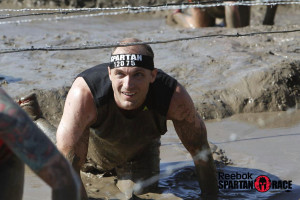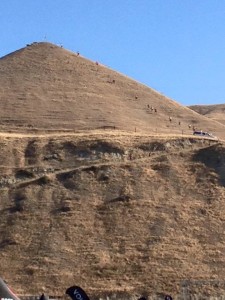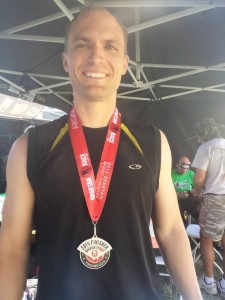Obstacle course racing (OCR) is gaining in popularity as a sport. There are more and more organizations offering events like the Spartan Sprint, the Tough Mudder Mud Run, the BattleFrog OCR, and the Warrior Dash. As the sport evolves, there are notable trends and skill sets that OCR athletes should take note of to be successful.
I recently competed in the Boise Spartan Sprint. Although the field of racers was significantly smaller for the open registration group compared to last year, I chose to compete in the even smaller competitive group. Watching the other athletes and comparing the event to last year I noticed a few trends.
Running
Regardless of the organization hosting the event, the gist of the event remains the same. Run, perform an obstacle, and run some more. These OCR events are still primarily running events. The obstacles are the reason why many people participate in these types of events. They are fun and challenging, but the event still includes running. The most successful OCR athletes will also be proficient at running on trails.
Most events are set in more rugged outdoor terrain. To be successful, you must be comfortable running on uneven surfaces. In the case of the Boise Spartan Sprint, you must also be comfortable running hills.
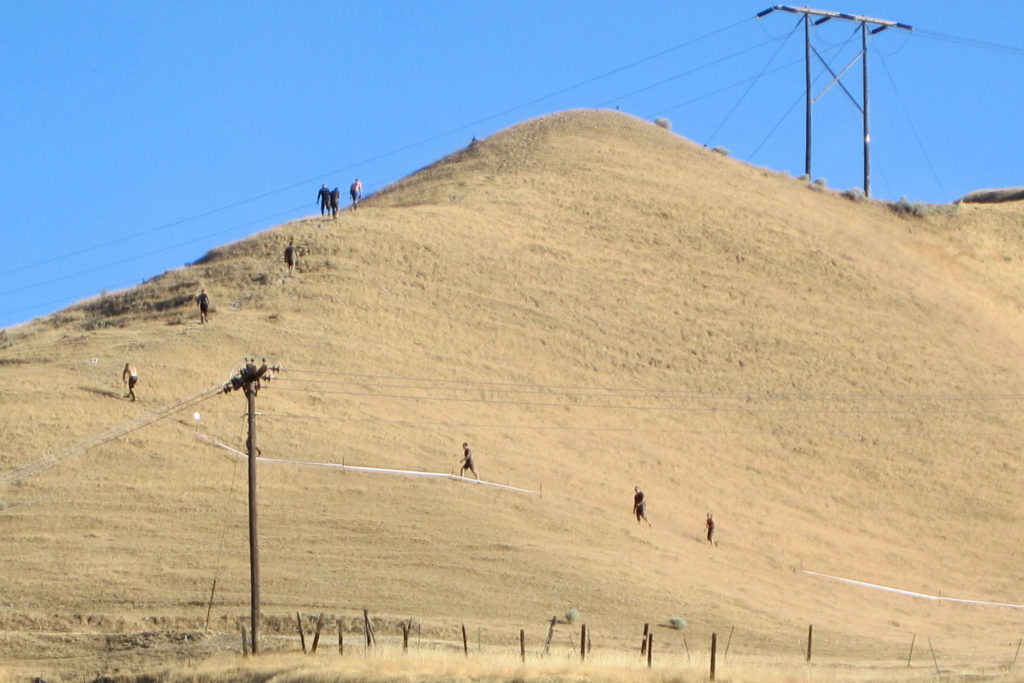
To better prepare for any OCR event, I would recommend a heavy dose of trail running with a focus on hills. From my prospective, Boise Spartan Sprint participants seemed more comfortable running this year. Maybe the word is getting out that these events still require running as a skill set.
I recommend that you are capable of running whatever the expected distance you would be competing in (plus a couple of miles) on a similar terrain in order to insure your body has the endurance needed for both the running and the obstacles.
High Intensity Interval Training (HIIT)
The format of many OCR events is to run, perform an obstacle, and then run. This means there are times when your intensity will be high and times when you can lower the intensity during the event. Performing high intensity interval training (HIIT) or high intensity training (HIT) should be a mainstay in your exercise training. It will be particularly useful during an OCR event.
The amount of HIIT in preparation for your race will vary and is dependent on the distance. If the race course will be a shorter distance (under 5 miles), then a majority of your running could be HIIT and shorter distance recovery runs.
If you will be competing in longer distances (10 miles or more), then I would still incorporate a weekly longer run just so your body will be prepared for the mileage and time on your feet. I highly recommend that you run outside–preferably on a trail or uneven terrain to prepare your legs adequately. You will need to feel comfortable running downhill and on uneven terrain. Dominate the hills, and you will dominate the race. Please refer to my Training Plan that I used for Race to Robie Creek, a very steep half marathon 8.5 miles uphill and 4.6 miles downhill.
CrossFit
CrossFit as a form of high intensity training (HIT) is an excellent method to train your legs to handle the hilly and variable terrain. The constantly varying movements and exercises performed in CrossFit will also help you prepare to handle the following varying types of obstacles:
- Picking up heavy objects and carrying them either in front or sometimes on your shoulders
- Pulling sleds
- Scaling walls
- Swinging and climbing along monkey bars
- Rope climbing
- Crawling in mud
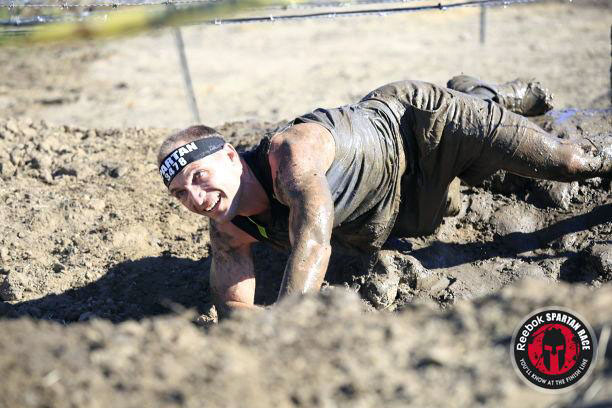
(Courtesy of Reebok Spartan Race)
Performing CrossFit style workouts is an excellent way to help to prepare for an OCR event. CrossFit teaches you how to prepare for these different obstacles by refining the skill sets necessary to tackle them. It also prepared me to perform the obstacles when fatigued.
Weight Training
Weight training (in particular, barbell training) is a critical component in physical resiliency. Lifting appropriately heavy weights is applicable for almost everyone regardless of age and/or present health status. Weight training has positive benefits on the following:
- Muscle strength
- Bone density
- Cardiovascular performance
- Neurologic performance and adaptability
- Mental and cognitive function
- Proper hormonal regulation
In the case of OCR racing, being stronger will always better prepare you for the terrain you will run on and the obstacles performed. Weight training will also help to increase your body’s margin for error when illness or injury occurs. To quote Mark Rippetoe, “Stronger people are harder to kill than weak people and more useful in general.”
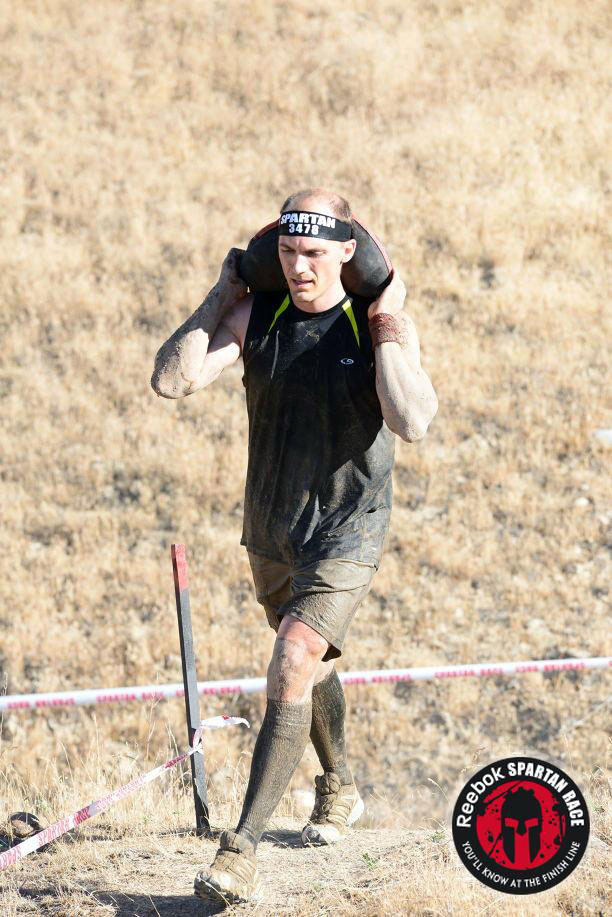
(Courtesy of Reebok Spartan Race)
The key to all training (including weight training) is that the system must be properly overloaded to produce the desired effect. Too little, and you will not receive a positive benefit. Too much, and you risk injury. This overload principle must guide all exercise routines if there is to be actual success and benefit from the training. Although any properly dosed/prescribed form of resistive exercise would be beneficial, the most effective exercises to help you prepare include squats, lunges, dead lifts, and the overhead press.
Grip Strength
Many of the obstacles (rope climbing, monkey bars, bucket carries, and climbing walls) require adequate grip strength. Current research on successful aging has found a correlation to poor grip strength and frailty, so developing adequate grip strength is a good idea either way.
In prior years many athletes would fail an obstacle solely because of their grip giving way. Although this still occurs frequently, I didn’t see nearly as many failed obstacles this year during the Boise Spartan Sprint versus last year.
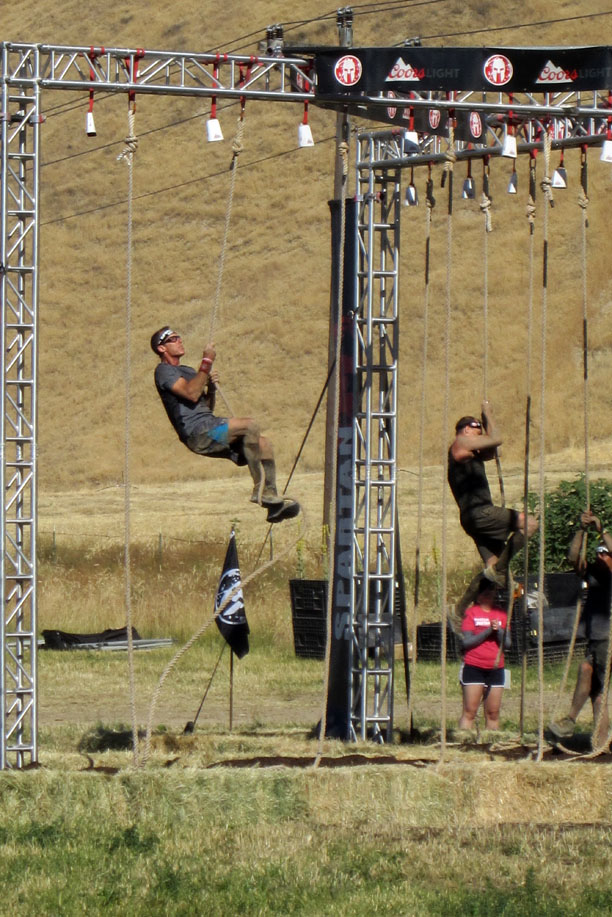
In order to perform at a high level, you must develop proper grip strength. Recommended exercises to train grip strength include dead lifts, pull ups, and farmers carries.
When working on grip strength, nearly everyone always focuses on finger and wrist flexion strength. If you remember to also work on your wrist and finger extension strength, you will find your grip strength will improve more rapidly. You will also lessen your risk of certain wrist and elbow overuse injuries.
Recovery Strategies
Once you complete the OCR, enjoy your accomplishment, but don’t forget to implement proper recovery strategies! Be sure to properly cool down after the race. Don’t sit! Stretch and continue to move. You will need to make sure that any scratches or wounds are properly cleaned and covered. Hydrate appropriately and begin working through your recovery process. For more information on how to quickly recover, please refer to the following posts: 14 Tips and Strategies to Self-Treat Muscle Pain and Muscle Cramping & Spasms – Treatment Options.
OCR events are a fun way to stay fit and promote general resiliency. The variety of skills needed to be successful is what makes it so fun. If you have the opportunity in your area to work out in a gym that is geared toward OCR racing, such regular practice on obstacles will be particularly effective when training for the more technical obstacles. Keep in mind that the most important skill sets are sometimes the ones most overlooked. Focus on your running; implement HIIT and HIT; weight train; and work on your grip strength.
Have you competed in an OCR before? Please share your experience by leaving a comment below.
If you have a question that you would like featured in an upcoming blog post, please comment below or submit your question to contact@thePhysicalTherapyAdvisor.com. Be sure to join our growing community on Facebook by liking The Physical Therapy Advisor!

